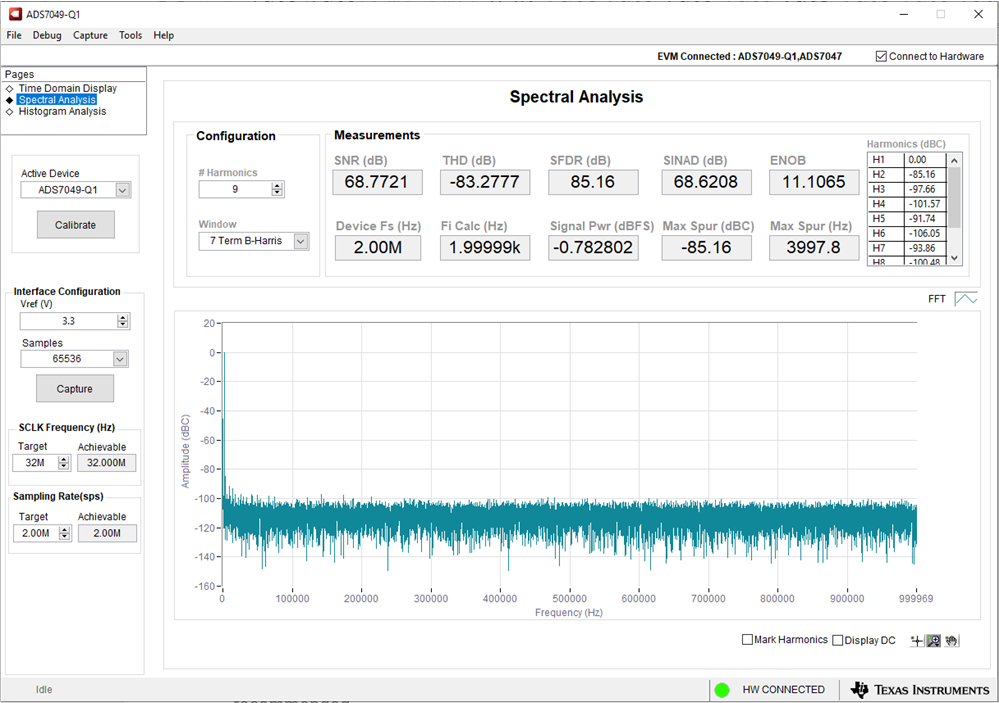SBAU382A November 2021 – January 2022 ADS7029-Q1 , ADS7039-Q1 , ADS7040 , ADS7041 , ADS7042 , ADS7043 , ADS7044 , ADS7046 , ADS7047 , ADS7049-Q1 , ADS7052 , ADS7054 , ADS7056 , ADS7057
4.4 Spectral Analysis
The Spectral Analysis tool shown in Figure 4-4 is intended to evaluate the dynamic performance (SNR, THD, SFDR, SINAD, and ENOB) of the ADC through single-tone sinusoidal signal FFT analysis using the 7-term Blackman-Harris window setting. The FFT tool includes windowing options that are required to mitigate the effects of non-coherent sampling (this discussion is beyond the scope of this document). The 7-Term Blackman-Harris window is the default option and has sufficient dynamic range to resolve the frequency components of all ADCs included in Table 1-2. The None option corresponds to not using a window (or using a rectangular window) and is not recommended.
 Figure 4-4 Spectral Analysis in the
ADS704X-5XEVM GUI
Figure 4-4 Spectral Analysis in the
ADS704X-5XEVM GUI